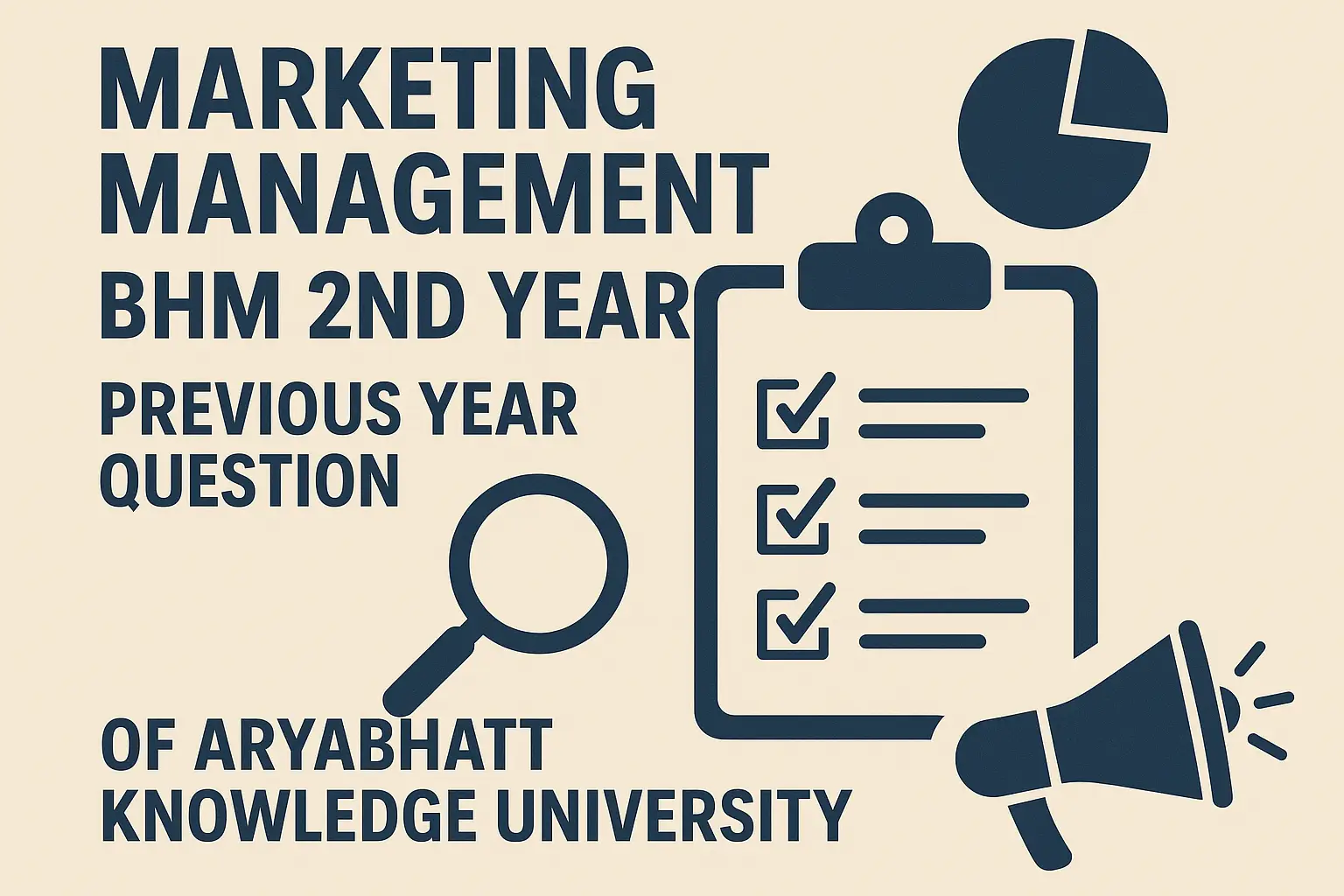Are you a student pursuing a Bachelor in Hospital Management (BHM) under Aryabhatta Knowledge University (AKU)? One of the most crucial subjects in your syllabus is Marketing Management. Whether you’re preparing for upcoming semester exams or aiming to strengthen your grasp on the subject, previous year question papers can be a goldmine for effective study.
In this article, we’ll provide a detailed overview of the Marketing Management previous year question paper, its importance, and how you can use it strategically to ace your exams.
Why Use Previous Year Question Papers?
Previous year question papers are essential tools for exam preparation. Here’s why:
- Understand the Exam Pattern: These papers reveal the structure of the question paper, including the types and distribution of questions.
- Identify Important Topics: Repeated questions indicate high-priority topics.
- Time Management Practice: Simulate real exam conditions to improve your timing and confidence.
- Boost Your Confidence: Familiarity with the question pattern reduces exam anxiety.
Overview of Marketing Management – BHM Course
Marketing Management in the Bachelor in Hospital Management program is tailored to provide students with insights into marketing strategies, consumer behavior, service marketing, and branding—specifically in the healthcare sector.
Sample of Previous Year Questions – Marketing Management
Here’s the types of questions that have appeared in the past years under Aryabhatta Knowledge University for the BHM course:
Marketing Management
Paper Code: 337201
Time : 3 Hours
Full marks: 70
Instructions:
- The marks are indicated in the right-hand margin.
- There are three Groups, namely A, B and C.
- Group-A contains TWELVE questions, Group-B contains SIX questions and Group C contains THREE questions.
- The students are asked to answer TEN questions in Group-A, FOUR questions in Group-B and TWO questions in Group-C.
GROUP-A
Choose the correct answer (any ten): 2×10= 20 Marks
1. Why is market segmentation carried out?
(a) To break-down large markets into smaller groups
(b) Provides an opportunity to surpass competitors
(c) By grouping together customers with similar words, it provides a commercially viable method of serving these customers
(d) Allows the achievement of greater market share
2. Which one of the following is correct while segmenting consumer market on demo-graphic basis?
(a) Low predictability of consumer choice behavior and high cost of measurement
(b) Low predictability of consumer choice behavior and low cost of measurement
(c) High predictability of consumer choice behavior and low cost of measurement
(d) High predictability of consumer choice behavior and high cost of measurement
3. The strategy to ensure the purchase of new product or high-quality product by the customer is called
(a) core sales
(b) upgrading
(c) full-time sales
(d) product-line sales
4. Which of the following is not the stage of new product development?
(a) Idea generation
(b) Business analysis
(c) Test marketing
(d) Positioning
5. Identify the channels of distribution.
(a) Retailers and Wholesalers
(b) Online and Offline
(c) Retailers and Distributors
(d) Direct and Indirect
6. Firms that help the company to promote, sell and distribute its goods to final buyers are known as
(a) sales intermediaries
(b) marketing intermediaries
(c) product promotion intermediaries
(d) finance intermediaries
7. Which of the following is not the element of 4P’s of marketing?
(a) Product
(b) Promotion
(c) Place
(d) Person
8) For a hospital, which one of the promotion methods is dominant?
(a) Advertisement
(b) Sales promotion
(c) Public relation
(d) Direct marketing
9) The physical evidence in case of a hospital would include
(a) location
(b) maintenance of patient records
(c) the cost of bed occupancy
(d) doctors and nurses
10. Which of the following is not an external factor affecting pricing?
(a) Market demand
(b) Manufacturing costs
(c) Competitor’s prices and offers
(d) Economic conditions
11) For hospitals promotion primary customers are
(a) doctors
(b) wholesalers
(c) retailers
(d) dealers
12. In which stage of product life cycle profit is the maximum?
(a) Maturity
(b) Growth
(c) Introduction
(d) None of the above
GROUP-B
(Short Answer-type Questions)
Answer any four of the following questions: 7×4=28
- Differentiate between Traditional concept of marketing and Modern concept of marketing.
- Discuss, in brief, the factors affecting price.
- Explain the types of distribution channel.
- Explain the different types of customers in hospitals.
- Discuss the use of marketing analysis in healthcare units.
- Explain in brief the various promotion methods.
GROUP-C
(Long Answer-type Questions)
Answer any two of the following questions: 11×2=22
- Explain in detail Gaps Model by Parasuraman.
- Explain in detail the tools for competitive differentiation.
- Explain the nature and significance of consumer behaviour.

